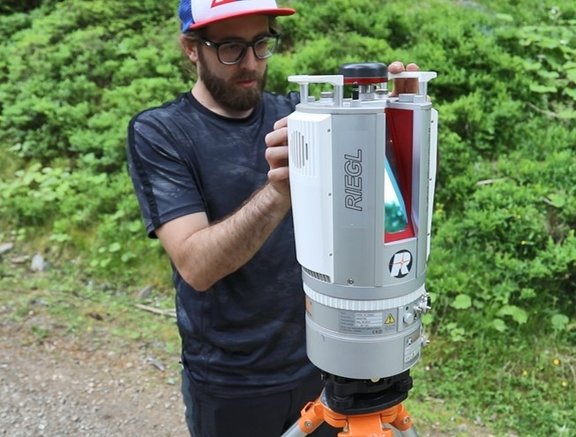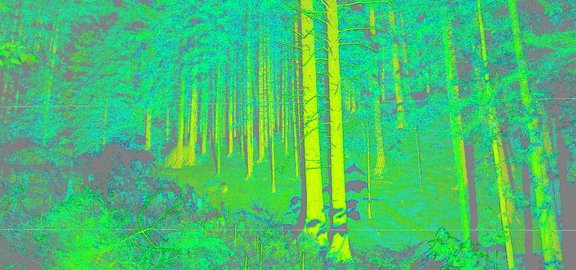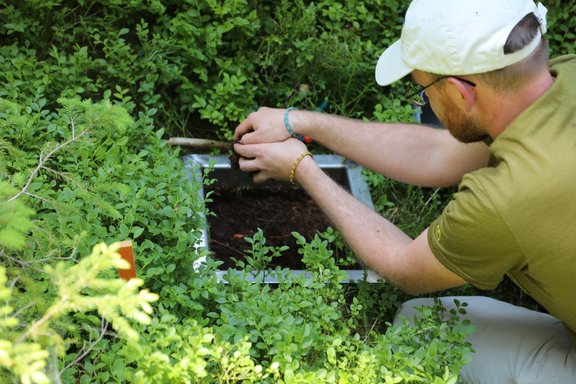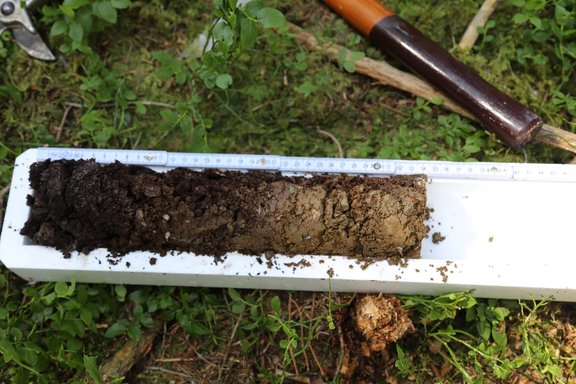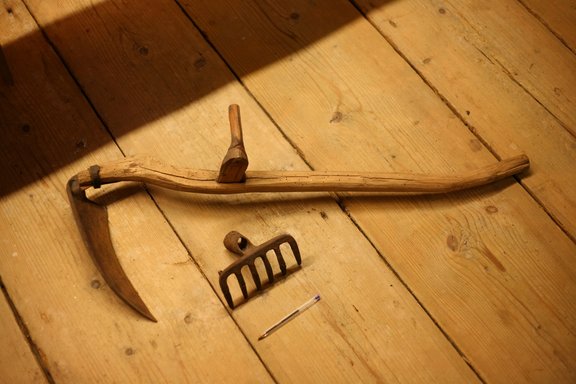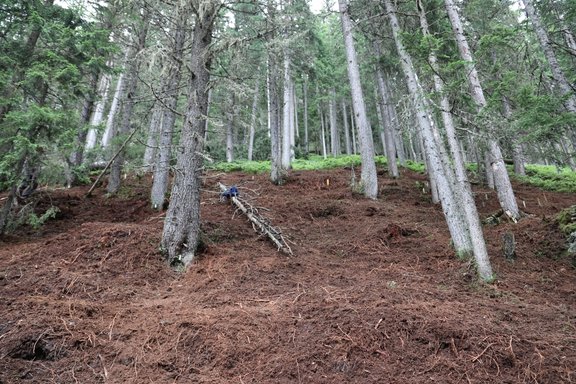During the summer, the HILUC team competed a wide range of fieldwork. Part of the fieldwork was laser scanning, humus and soil sampling, litter removal, hemispherical photography and rainfall simulations.
Laser scanning
Through the laser scanning of the research plots it is possible, to collect information about stand and surface characteristics of the forest.
Humus and soil sampling
To determine the amount of carbon and nutrients stored in forest humus and soil, samples were acquired. Furthermore, samples were taken for the investigation of mycorrhiza.
Litter removal
Until the middle of the 19th century, litter raking was practiced by local farmers in the forests of Tyrol. In the process, the organic layer was first mown with special scythes and then collected with rakes. The obtained material was later used as bedding in the stables.
After an extensive literature research and interviews with local farmers we tried to recreate the historical use of the forest.
Hemispherical Photography
Hemispherical Photography is a technique that can be used to estimate canopy closure or leaf area index. This involves taking upward photos of the forest canopy with a wide-angel lens. To determine the influence of the litter removal on the forest canopy, the photos were taken bevor and several times after the intervention.
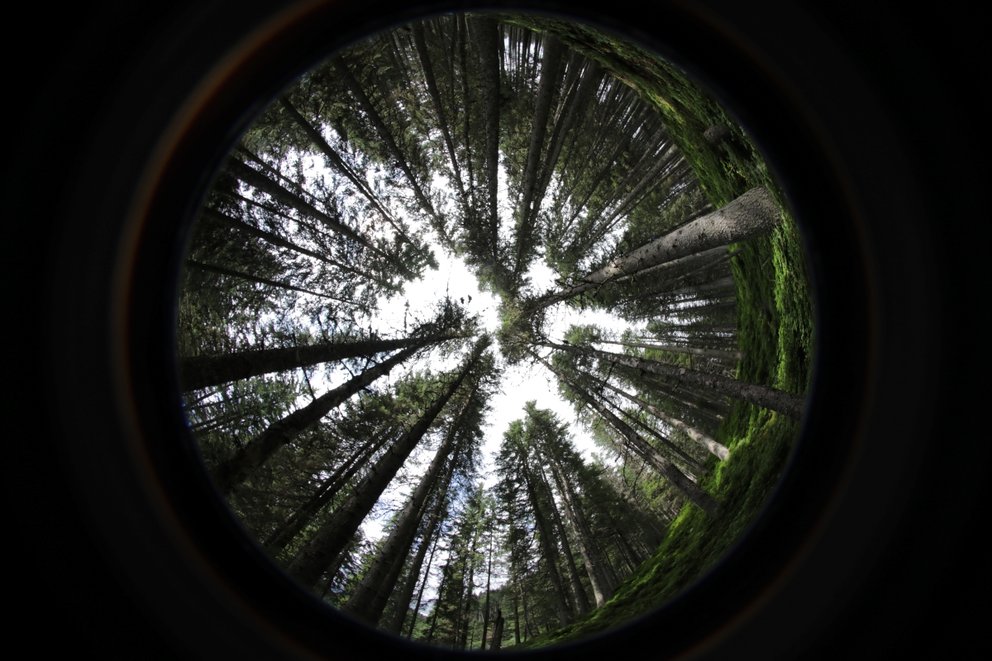
Hemispherical photo with a fisheye objective and capture of tree tops.
Photo © R. Schrott, 2023
Rainfall simulation
In cooperation with our partners from the Austrian Forest Research Centre (BFW), rainfall simulations were carried out using a transportable spray irrigation installation. To measure the surface runoff a drain is placed at the end of the irrigation plot, which ends in a measuring tank. These rainfall simulations were executed two times, bevor the litter removal and after. Through this we try to get a better understanding of the effect of humus and the influence of litter removal on surface runoff development.
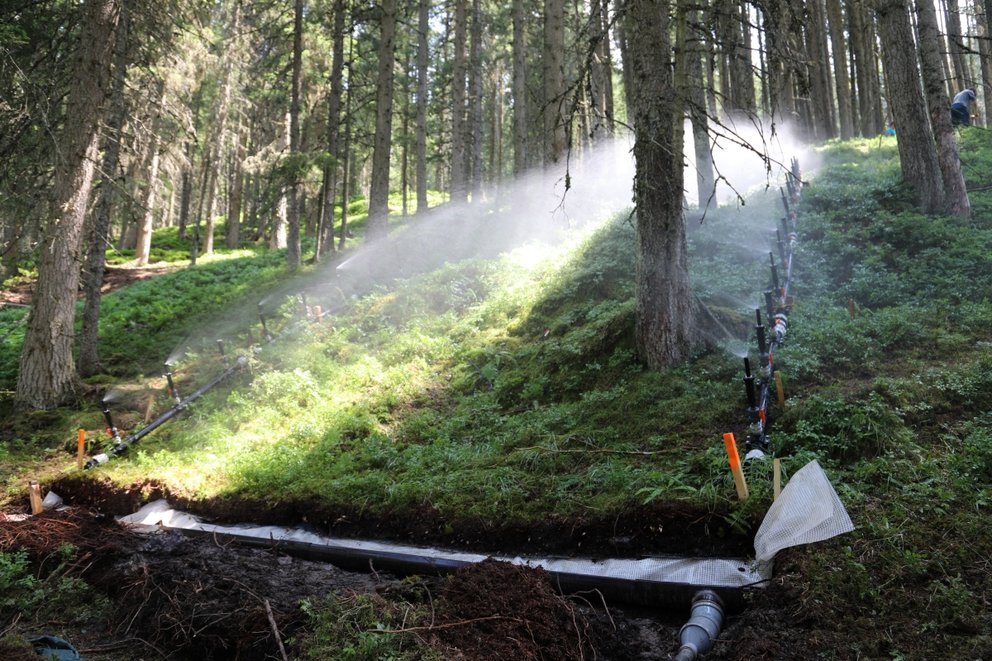
Large-scale irrigation system of the BFW in operation under forest.
Photo © R. Schrott, 2023.

